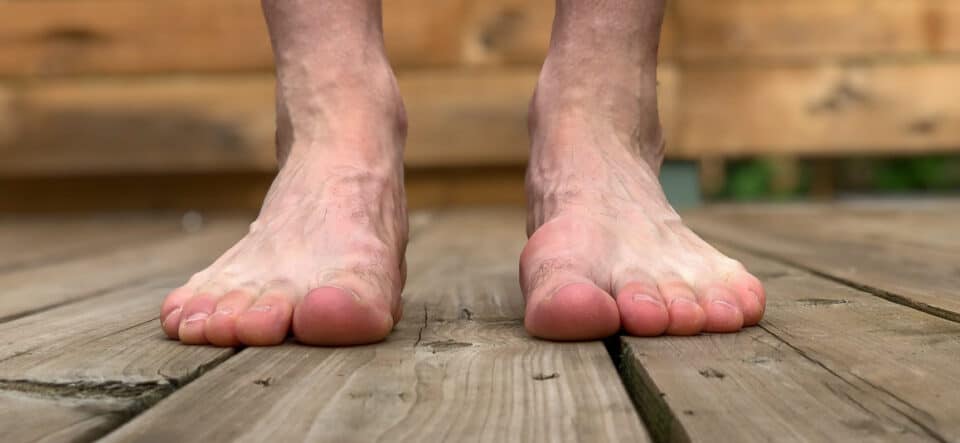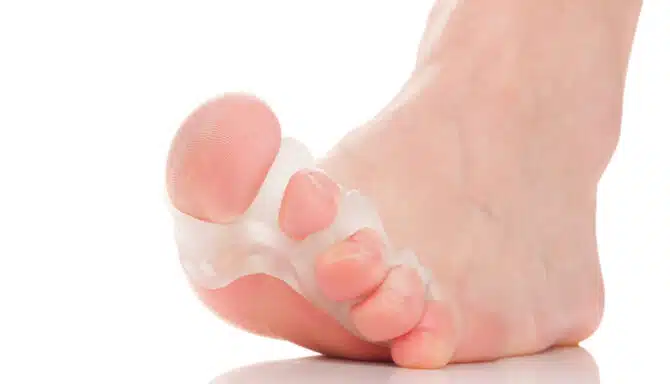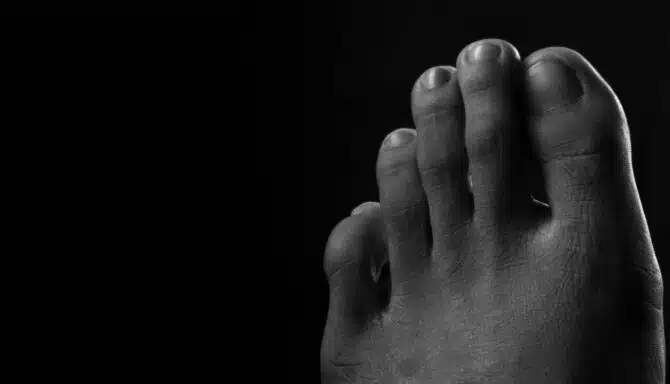A bone spur is an abnormal bone growth.
Bone spurs, also referred to as osteophyte, can occur throughout the body, and along bone edges. Common sites include the spine, neck, and in the foot, specifically in the heel and toes (as pictured in this blog post).
What is a bone spur?
Osteophyte is bony outgrowth at the intersection of your bones. Osteophyte occurs because of damaged joints and develops when the body tries to heal itself from injury. A bone spur can be visible in the form of a hard bump. In other cases, it may not be apparent at all that you have a bone spur.
What can cause a bone spur?
Osteophyte forms when the body tries to repair itself, so there are underlying causes to how and why a bone spur forms.
Osteoarthritis is a leading cause. Osteoarthritis is the most common type of arthritis and occurs when the cartilage between your bones begins to wear down. Because joint cartilage cannot be repaired, the problem often gets worse if not treated or addressed correctly.
In response, your body forms extra bone to stabilize the damaged joint. One can develop osteoarthritis, and thus a bone spur, because of overuse – running, ballet, and any other sport that puts enormous pressure on your feet – as well as an acute injury, obesity or being overweight, and wearing tight shoes. Overuse can result in osteophyte because of ligament damage and your body attempts to fortify itself by building calcium deposits.
Symptoms
Symptoms of osteophyte include pain, stiffness, tenderness, loss of flexibility, grating sensations, swelling, and seeing bony projection itself.
You may experience loss of flexibility as your joints lose their full range of motion, as well as swelling due to the damaged tissue being inflamed. You may also hear and feel grating due to the bones rubbing together.

These symptoms are particularly prevalent in athletes who participate in high-impact sports. Those who run, or do gymnastics and ballet are particularly prone, as are older people. Symptoms may get worse over time if not addressed. Plus, you may experience any combination of these symptoms.
Typically, if you have a heel spur, you will notice a bony projection on the underside of the foot. Meanwhile, if you have a bone spur in your metatarsal or toe, there may be a protrusion on the top of your foot. If the growth is serious enough, you may need new shoes to accommodate the growth.
Treatment
Treatment isn’t always necessary, since a bone spur may not cause you any pain or reduce your quality of life.
If you experience pain, visit a professional to get a proper diagnosis and treatment. It should be noted that you cannot remove the bone spur without surgery. But, if you fix the problem at its root, and take certain precautionary steps, bone spurs won’t necessarily be painful, and surgery won’t be necessary. In any case, surgery is a short-term solution as a bone spur can re-develop.
Certain treatments include weight loss, changing shoes, hot and cold therapy to reduce inflammation, and anti-inflammatories.
If you do require surgery, the course of action is to either remove the bone spur entirely or to fuse the bones together. Recovery time can vary, and as always, it’s best to consult a healthcare professional for a proper diagnosis.
Prevention of bone spurs
To prevent bone spurs, in essence, you want to reduce your risk of osteoarthritis. Common preventions include:
- Orthotics, which can help support your feet if you have high or low arches.
- Avoid wearing shoes tight in the toe and heel region, and find footwear that best suits your foot type by visiting a specialist. Our foot clinic is open six days a week and offers a large selection of supportive and cushioning footwear.
- Follow the RICE method – rest, ice, compression, and elevation – after intense exercise to allow your body and feet to recover.
- Visit a doctor if you notice early signs of a bone spur, or osteoarthritis.
Visit us at 2481 Bloor St. W, Toronto or call us at 416.769.3338(FEET) to book an appointment for your foot care needs and treatment.







